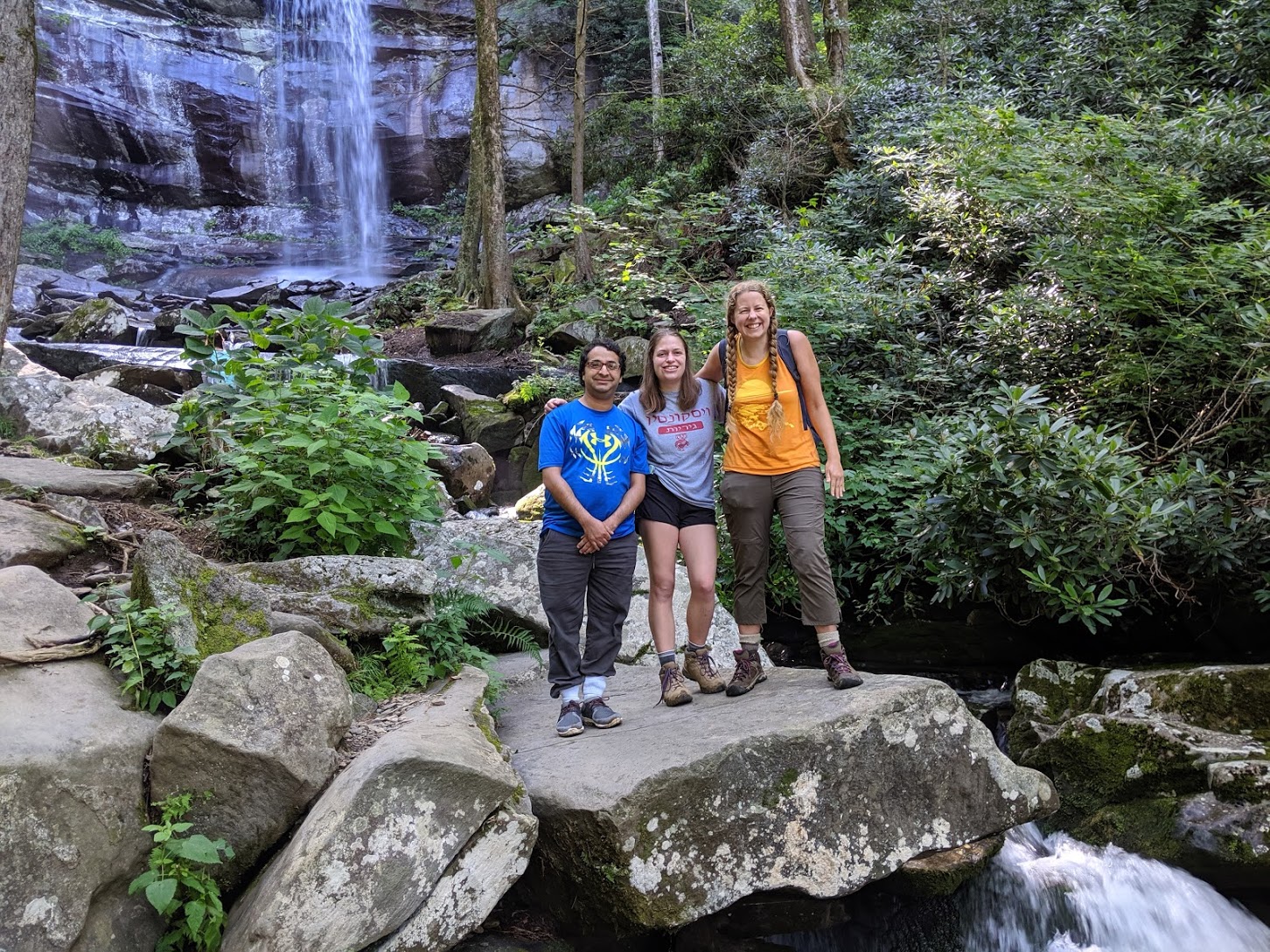Projects
 Dr. Praskievicz (right) and students doing fieldwork on North Buffalo Creek in Greensboro.
Dr. Praskievicz (right) and students doing fieldwork on North Buffalo Creek in Greensboro.
Urban streams
Dr. Praskievicz integrates research, student learning, and public outreach using Greensboro’s urban streams as a study area. Her course GES328: The Water Planet involves undergraduate students in field-based stream research through semester-long projects in which the physical habitat and water quality of local urban streams are assessed. Dr. Praskievicz partners with local community groups to select sites and develop project ideas so that the data collected and analyzed by the students can be used for real-world applications, such as evaluating the effectiveness of stream enhancement projects and addressing issues of environmental injustice.
 From left to right, Raj Sigdel (Ph.D. student), Lena Ben-Gideon (high-school student field assistant), and Dr. Praskievicz in Great Smoky Mountains National Park
From left to right, Raj Sigdel (Ph.D. student), Lena Ben-Gideon (high-school student field assistant), and Dr. Praskievicz in Great Smoky Mountains National Park
Interactions between physical and biological processes in river systems
Dr. Praskievicz is interested in the interactions between abiotic and biotic components of river ecosystems. She supervised research by her former master’s student, Emily Buege, on the Bladen River in Belize. The team used field surveys and ecological modeling to determine the physical habitat controls on cichlid nesting sites and used hydraulic modeling to map channel habitat units from remotely sensed imagery. Dr. Praskievicz has also done extensive research on the science and policy of environmental instream flows, using Alabama (the state with the highest levels of freshwater biodiversity) as a case study. More recently, Dr. Praskievicz has become interested in the dynamics of large wood in streams. She and her Ph.D. student Rajesh Sigdel surveyed streams in Great Smoky Mountains National Park in Tennessee to determine the impact of the 2016 Chimney Tops 2 wildfire on large-wood loads.
Dr. Praskievicz is continuing her work in the Smokies with a project studying fog interception in the high-elevation spruce-fir forests of the park. She is also continuing to research post-wildfire impacts with a project modeling debris flows in wildfire-affected areas across the US. Finally, she is starting a new project on dynamics of large wood in low-gradient rivers on the Coastal Plain of Alabama and North Carolina.
Flood-inundation modeling
Through her experience as a Theme Leader in the NOAA National Water Center Summer Institute in 2015 to 2018, Dr. Praskievicz developed an interest in flood- inundation modeling. Specifically, she is interested in integrating remote sensing, geospatial analysis, and hydraulic modeling to simulate flood-inundation extent and depth and to analyze the physical and socioeconomic controls on flood risk. She has supervised student projects focused on a variety of different flood types, including urban stormwater flooding, riverine flooding, and the multiple mechanisms that lead to flooding during tropical cyclones.
